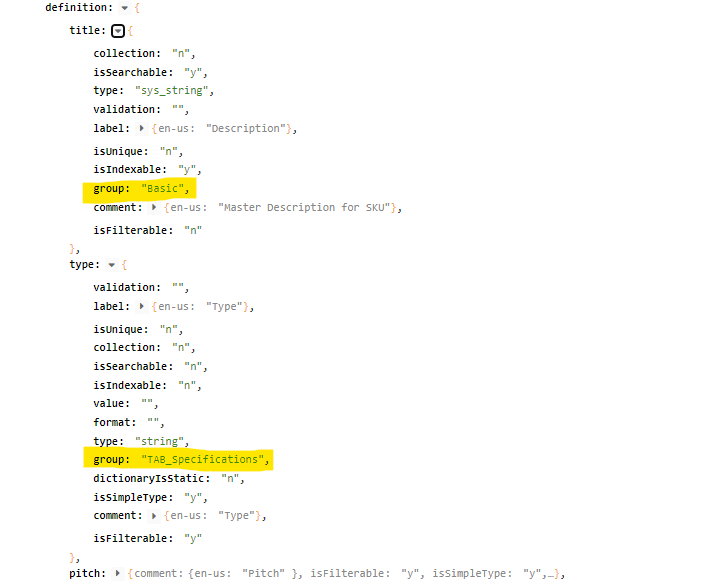Product Attribute Groups
In the Product Information Management (PIM) System, product attribute groups serve as an optional but potentially powerful tool for managing and utilizing product attributes. Essentially, attribute groups allow users to cluster related or common attributes together, thereby providing an organizational structure that can streamline various operations within the PIM.
The attribute Group setting for each attribute is found on the individual attributes settings page.

One key advantage of attribute groups is the convenience they provide in the user interface for editing related attributes. For example, if you have an attribute group for "Technical Specifications" that includes attributes like battery life, processor type, and memory size for a laptop, you can quickly navigate to and edit these related attributes simultaneously. This group-based approach not only saves time but also enhances the consistency and accuracy of data editing.
Additionally, attribute groups play a significant role in controlling how product attributes are displayed on the Brand Portals, external websites, or consumed by applications connected via the PIM "Fast Data Serving" API, channels, or feeds. For instance, on an e-commerce product page, attributes within the "Technical Specifications" group could be displayed in a distinct section, making it easy for customers to locate and understand this information.
Attribute groups also offer flexibility in presenting tailored views of product data for different purposes. For example, a brand portal might display a 'Key Features' attribute group prominently, while a third-party comparison site might prioritize a 'Specifications' attribute group.
In conclusion, while attribute groups are optional within the PIM, their utilization can significantly enhance the user experience, streamline data management, and provide more control over data representation across various platforms. By grouping together related attributes, businesses can ensure a coherent and structured approach to product information management.
The Attribute's "group" information is returned in the product related API requests. This allows classification or grouping of API data. In the Brand Portals the data will be grouped in the appropriate details "TAB." In custom headless e-commerce implementations, developers and integrators have used this feature to make hiding, showing and grouping of product data easier and dynamic.

